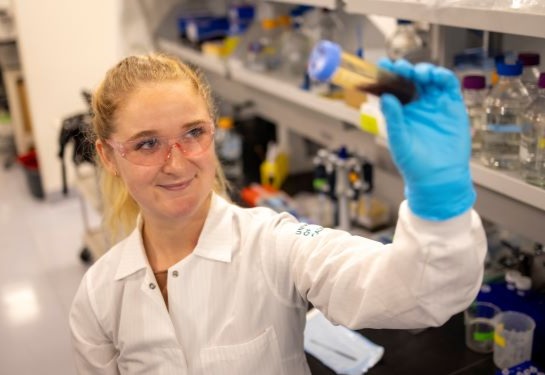UC Davis Health team physician: How to care for elite athletes
Sports medicine physician Marcia Faustin shares advice from her work in Division I athletics and with Olympic athletes.
As associate head team physician for UC Davis Division I Collegiate Athletics and co-head team physician for the USA Gymnastics women’s national team, UC Davis Health’s Marcia Faustin treats elite athletes in a wide range of sports. Faustin is a family and sports medicine physician in the Departments of Physical Medicine and Rehabilitation and Family and Community Medicine. She recently returned from the Women’s Artistic Gymnastics World Championships in Antwerp, Belgium, where she worked with Simone Biles and the women’s gold-medal-winning team. Faustin shares what it’s like to care for athletes at the top of their game.
What should sports medicine physicians consider when they’re treating elite athletes?
As we do with all patients, we want to know the athlete’s short-term and long-term goals. This would include the next competition and training plans. For Olympic-level athletes, we typically discuss their goals in terms of “quads” following the Olympic calendar, because there are four years between each Olympics.
What is it like to work with elite athletes?
Elite-level athletes are great patients and a fun group of patients to care for. It’s a bit of a shift in that we typically need to hold them back from training or competition, rather than motivate them to get healthy. If they are recovering from an injury and want to return to a competition in one week but need more time to recover, as physicians we try to keep a big-picture view of their goals to make a collaborative decision on their return to competition. At times, it can be “less is more” advice.
Do you have to know and even love sports to be a good sports medicine doctor?
It’s helpful to understand the sport that the athlete is playing. As a prior gymnast, volleyball and Division I track and field athlete, I find it makes it easier to relate to the athletes. Evidence has shown us that when patients are cared for by providers who are similar to them, it improves health outcomes, and it is no different for the athletes we care for at the sports medicine clinic. There are many sports I have not played, but I am excited to learn about them, to improve my care for those athletes.
How has sports medicine changed since you played sports in high school and college?
There’s been a significant increase in evidence-based medicine within sports medicine, which has translated to an increase in education and awareness for our patients, parents, coaches and medical providers. One key area of awareness is regarding concussions. Years ago, if an athlete got a concussion, people may have said, “You got your bell rung.” Today, we have a lot more information, such as the 2023 Concussion Consensus Statement, on how to safely care for athletes with potential concussions.
Do you see a lot of eating disorders in elite athletes?
We do see athletes affected by eating disorders, and it’s important to note that eating disorders can affect athletes of all levels. Uniquely, elite athletes are in the public eye, and with social media, they receive a lot of positive and negative feedback, which may put pressure on them to be a certain body type. We may see a higher prevalence of eating disorders in weight-cutting sports such as wrestling and aesthetic sports like figure skating or gymnastics. In terms of treatment, we take a multidisciplinary approach, including medical doctors, psychologists, behavioral therapy, medication and registered dietitians.
I presume the female athlete triad — disordered eating, menstrual irregularity and bone stress injury — is also something you deal with. Can you talk about that?
The cornerstone of the female athlete triad and relative energy deficiency in sports is low energy availability. The equation for this is: Nutrition – energy output (exercise) = amount of energy available to the body. If you have an energy imbalance, this can lead to recurrent injuries, GI upset, iron deficiency, anemia, low hormone levels, bone stress injuries or low bone mineral density, and more. The majority of the time, athletes are not aware they are not consuming enough nutrition for the amount they exercise. The overall goal is to provide awareness and education to athletes, coaches, parents and all stakeholders.
What would you like parents to know about their young athletes?
First, I want parents to truly understand if their child is excited about the sport they’re participating in. Second, how is the culture around the practice and/or competition? Their kids may spend more time with their coaches and teammates than they spend at home with their parents, so it’s important to make sure that the environment is physically and emotionally safe. Another important thing is empowering your child to know their own body. That’s especially true for elite-level athletes. They need to understand and know their bodies, speak up if something does not seem right, and advocate for their health.
You were at the 2021 Tokyo Olympics when Simone Biles took herself out of competition because of the twisties. Can you talk about that?
I feel very proud of Simone and all the women who won the Team Silver Medal at the 2021 Tokyo Olympics. Simone and athletes like Michael Phelps and Naomi Osaka are fierce advocates for mental health and are inspiring so many people to speak up about their mental health. As physicians, we continue to try to break down the stigma around mental health and give our patients the safe space to discuss their feelings and emotions so we can find ways to best support them.




